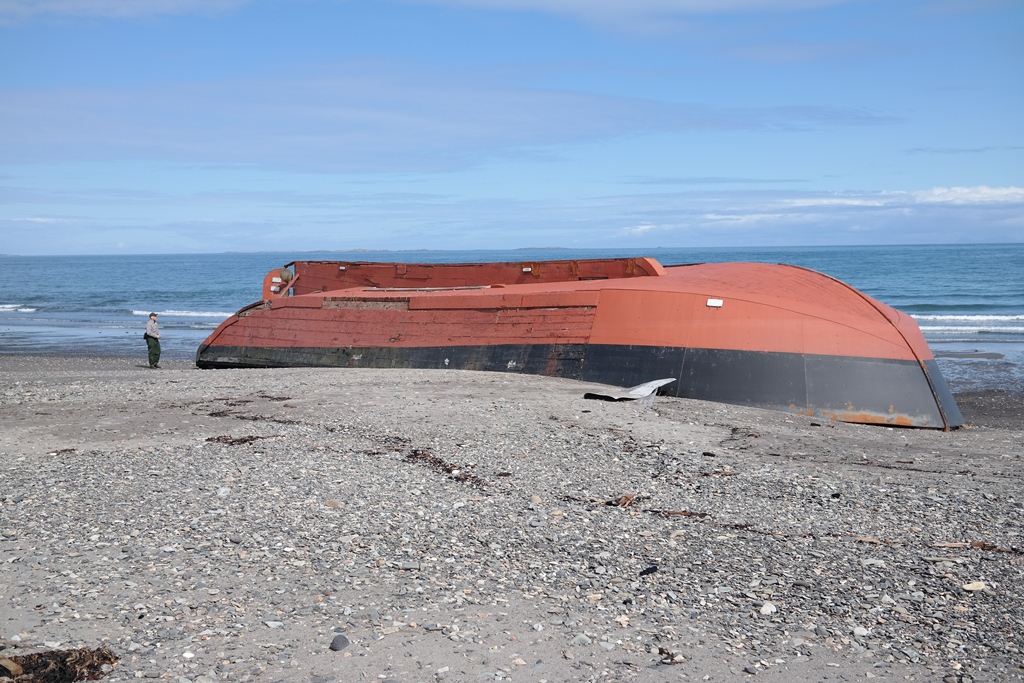There are boats that should never go to sea. The 82-foot Northern Pride falls into that category. The 70-year-old wooden fish tender had a list of deficiencies when she left Seward, Alaska, on April 20, 2015, for a 900-mile voyage to the Togiak herring fishery.
Things that needed to be remedied but weren’t included missing electrical junction boxes, electrical wiring issues, engine gauges not operational and no alarm system for the main engine. Then there was the hull. When the Northern Pride was launched she wouldn’t stop leaking. Those old wooden planks just couldn’t swell up enough to keep out Gulf of Alaska waters. That and a generator fire led to the Northern Pride capsizing and finally washing ashore on Katmai National Park.
As the accident report stated: “Contributing to the accident were the overall poor condition and maintenance of the vessel and the captain’s decision to get under way in a vessel with known deficiencies.”

The National Transportation Safety Board’s Safer Seas Digest 2016.
That’s one of 27 accidents included in the National Transportation Safety Board’s Safer Seas Digest 2016. This is the fourth year the NTSB has issued its report and this is the best yet in terms of how the material is presented and organized.
The 27 accidents are analyzed across seven categories of vessels including offshore supply, fishing, tanker, towboats, cargo, recreational, and public (Coast Guard cutters). Unfortunately for the commercial fishing industry, their share of the accidents is greater in this new report than previous years. For the 2016 report it’s 10 out of 27, whereas in 2015 it was seven out of 29, in 2014 five out of 23 and in 2013 six of 21.
Each accident report in Safer Seas Digest 2016 includes color photos of the boat, circumstances of the accident and how the crew handled the situation, while a summary discusses the accident’s probable causes. At the end of the report are sections on lessons learned, vessel particulars, including the flag the vessel operates under, type of vessel, length, draft, beam and number of crew, followed by a map of accident locations.
This year, accidents for commercial fishing vessels went outside the immediate U.S. waters with a collision in Puerto Rico between the 42-foot Sea Shepherd and the 110-foot Coast Guard cutter Key Largo and the grounding of the 85-foot Sea Hawk No. 68 in America Samoa.
Closer to home, the Gulf of Mexico had three incidents. The 71-foot Hawaii Five-1, after being converted from a shrimp trawler to a longliner, was going from Bayou La Batre, Ala., to its new homeport of Honolulu, Hawaii, when she capsized in rough seas. The 86-foot Miss Eva sank after a fire that broke out in the engine room was followed by down flooding, and the 75-foot Capt. Richie Rich sank while shrimping, after an outrigger broke and penetrated the hull.
In California’s Ventura Harbor, the 70-foot Ferrigno Bay ran into a pier and dock. The 73-foot Day Island went onto Ventura beach and had to be dismantled and removed in pieces. That was attributed to “the captain falling asleep while operating due to the effects of acute fatigue” and “the captains’ use of medication that may have been sedating.” This was one of three accidents where fatigue played a major role.
Along the inside passage that fishing boats take going from Seattle to Alaska, the 311-foot Gordon Jensen grounded out near Bella Bella, British Columbia, on its way to Dutch Harbor.
Further north in the Gulf of Alaska, the above-mentioned 82-foot Northern Pride sank 12 miles east of Shuyak Island. And it turned out to be a mistake to take the 73-foot Kupreanof on its first open-ocean voyage in two decades. On June 9, in 35-knot winds and 10-foot seas, the Kupreanof sank, probably due to flooding through the lazarette.
The full report is available for download online, along with an explanation of the investigation process and additional data.
“We hope that Safer Seas Digest 2016 continues to help the marine industry discuss and address the safety issues confronting it,” said NTSB acting chairman Robert L. Sumwalt, III.







